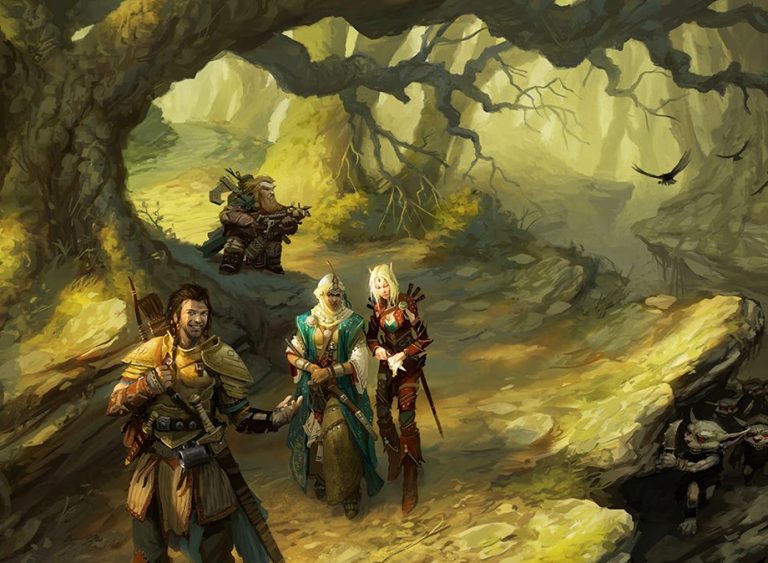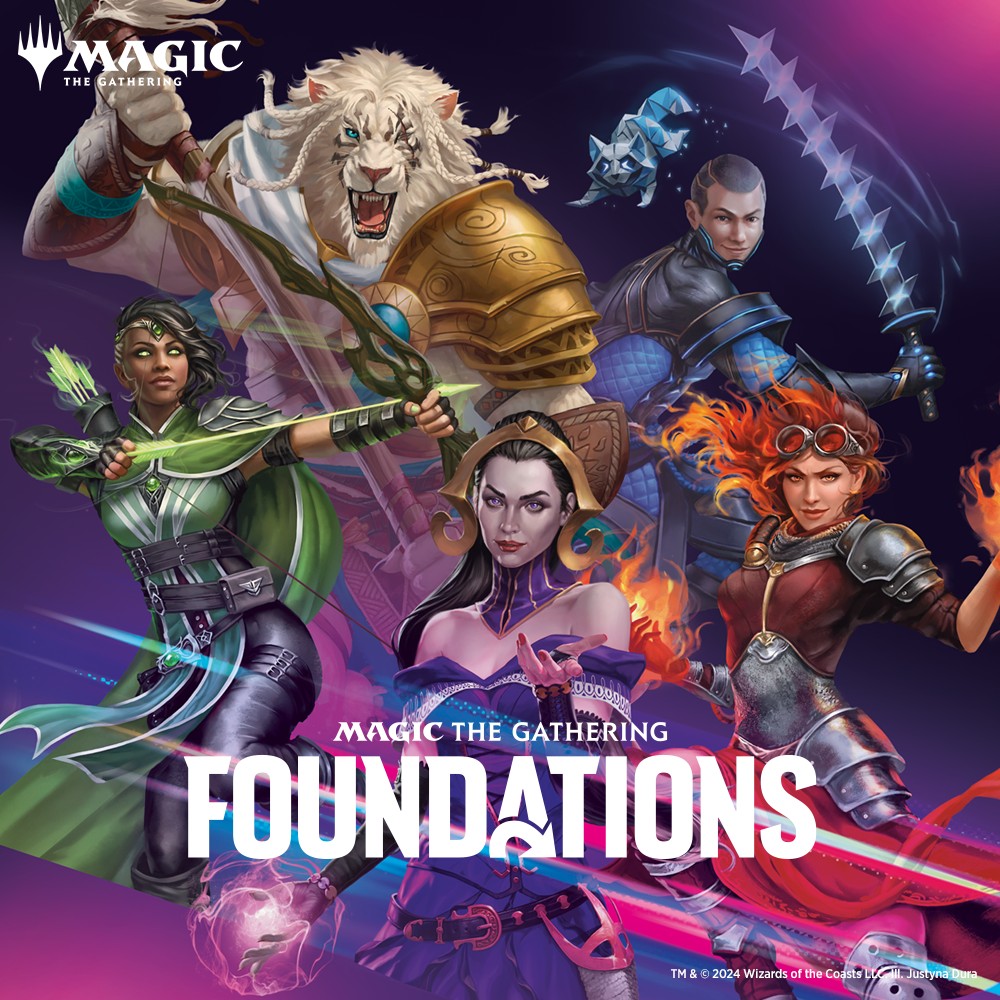3 Ways to Run Travel in your D&D Campaign
As adventurers, you will likely search out many new and interesting destinations, but how do you get there? Whether it's across oceans, through forests or jungles, or over arctic tundra, your characters need to get to that exciting destination somehow. Unfortunately, travel can be a bit boring. There will be large spans of time when absolutely nothing happens. So how can you portray this epic journey through the fantastic wilderness to your players, while still keeping everyone engaged?
Many published adventures have you add in some random encounters to portray that passage of time, and you can adapt many of them to your game. There are tables for exactly this! This seems like a simple solution, and it adds some substance to those travel sequences without a huge amount of work. Does it work though? Let's look at how that might roll out at your table:
DM: <rolls a d20> Ok, 13... that is 1d4 Myconids. Great! "As you march northward against the driving snow, 2 giant mushroom people attack you from behind a frozen clump of ice!"
The Players: "Uhm... wait, why are there Myconids in the arctic?"
DM: "Because of magic! D&D! Adventure!!"
The Players: "<collective eye roll> Ok, I attack with my longsword..."
It can seem a little contrived or like you are just dropping combat in for combat's sake. Don't get me wrong, you can absolutely make this method work in your game but there are a lot of situations where this style of travel doesn't get across the feeling you want to present to your players. Epic 3-month sea voyages summarized into a few random encounters may not portray the style of the voyage you are looking for.
So what other options are there? I've grouped some of my favorites into 3 categories. Handwaving, Realtime, and Somewhere-in-between.
Travel vs. Exploration
Before we get into your different options, it is important to note the difference between Travel and Exploration.
Exploration is one of the 3 key pillars of the game, and there are lots of rules and methods for dealing with this. Generally, Exploration happens on a small scale, like a room, house, cave, or dungeon. The characters typically don't know the details of where they are going either. They will likely have a goal in mind (find the thing) but the details of how to get there are at least somewhat unknown.
Travel, while similar to exploration, requires a slightly different approach. The distances and time involved are much larger and the characters will likely have a pretty good idea of how to get where they are going. They have a map, or they are following someone or something. Many of the exploration pillar methods can be used for travel, and I'll discuss some of the ways you can adjust them to make it work.
Option 1: Handwave it
ACTIVATE MONTAGE MODE! If your players don't enjoy the gritty details of surviving on the road, there is nothing wrong with just skipping it entirely. BLASPHEMY you say? Well, to each their own! If you can't imagine just skipping this in your game, please feel free to skip this section and go straight to the next one.
One of the problems with this method is that you can lose the 'feeling' of it taking a long time. The travel should still feel like there is a cost. You can get this across by writing out some descriptions of the travel. Include details like the landscape, who or what else you come across, and the weather. It doesn't need to be lengthy, you can summarize it all in a paragraph or two. It can also help to keep track of the days on the calendar of your world, and to give quests a limited amount of time to take place, or have events take place on a certain date. This will make the travel feel impactful, without actually getting into the details of it all.
Option 2: Real-Time or Day by Day
If your players love the gritty details of travel; tracking rations, foraging and hunting for food, using the map, and interacting with everything in that environment, you can run the travel in real-time. Fill that road with dangerous bandits, towns, taverns, and Owlbears, and then run and track it very much like you would run any other aspect of the game. This is probably best for shorter travel sequences, or for travel that is integral to the story. The travel in Icewind Dale for example is part of the story, it is a challenge the characters need to overcome just like a combat encounter. When the travel itself is part of the story, this type of detailed, real-time travel is appropriate.
Be cautious however, this can be tedious for your players. If you want a little bit of this, but not the tediousness of it all, the next section is probably just for you!
Option 3: Somewhere in the Middle
As with most things, moderation is key. When you want a little bit of the details and a little bit of the handwaving, here are some options you can use. My suggestion is to use these as a pick and mix buffet. Choose the ones that seem interesting to you and adapt them as necessary.
Daily Survival Roll
Have the characters roll once per day to see if they are able to follow the map. You can have a random roll table for these or make it a survival skill check and set a DC for the check based on the difficulty of the terrain and the weather conditions (see below for weather options). For additional flavor, critical fails can be a combat encounter (or some other setback), while critical successes would allow them to travel at a faster pace than normal (finding a shortcut or something, for example). Try to spread these out across the party, 1 character per day, for example, to get everyone involved.
Environmental Setbacks
Have the characters roll once per day to see what setbacks they encounter. Setbacks can be things that add time to their travel, or you could present them with a situation they would need to figure out how to solve. Examples of this could be weather, road/trail washouts, poorly constructed bridges, or even disease caused by insects or swamp water. As with the first option above, you can either have this be a simple table of setbacks, or you can present a skill-based problem to solve.
Encounters with things
Random encounters may not be your thing, but you can have environment or story specific encounters that make things more interesting. This doesn't only need to be combat, you could have a tense roadside social encounter, or you could come across a coven of hags that want to hear your stories. Whatever you choose to put in here, make sure it drives the story or adds to the flavor of the world somehow.
Downtime Activities
You can present your players with some downtime options if it's appropriate for the method of travel. Long sea voyages or travel by carriage seem appropriate, but anywhere that they could focus enough of their attention on learning or building new things should work. There are a lot of great resources out there for how to run downtime so I won't rehash them all, but here are some links to my favorites:
D&D Downtime Activities
Making Downtime in D&D Fun
A Quick Gude to Downtime Activities
Give Them Decisions to Make
For any given voyage, put a few decision points in place. Describe the travel up to that point, and then give them a situational decision. This could be a fork in the trail and they need to decide which way to go, or something that forces a decision on how fast to travel, and for how many hours in a day. Do they want to push on for an extra few hours after dark, but take a point of exhaustion, or do they want to take it slow but stay stealthily hidden for a certain portion. Whatever decision points you make, come up with a few consequences (good or bad) for each decision. Exhaustion is a pretty good consequence, as well as night time encounters with wildlife or even arriving earlier or later than they wanted to.
Skill Challenge
A very interesting way to travel is to create a skill challenge to help guide the narrative. Skill challenges are a mechanic from 4th edition and I've mentioned them before a few times. I think it's probably a large enough topic to warrant its own article, in fact (note to self...). Essentially, you are going to let your players describe how they use their skills to help them travel. This is great for two reasons: 1) Everyone gets a turn to shine and 2) You can really cash in on those proficiencies that are rarely used (animal handling and performance, I'm looking at you...). You set the difficulty of the skill check by choosing how many successes they need before they get 3 failures. 3 successes before 3 failures would be a fairly average challenge and 5 before 3 would be quite difficult. Typically the DC for each check is 15, but you can adjust that as well if necessary. Then have everyone pick a skill (no repeats) and describe how they are going to use that skill to help the group on their travel. If they describe a particularly creative way, you can give them advantage, lower the DC, or award inspiration. Then have them roll the skill check and see how they do, keeping track of successes and failures as you go around the table. You can add narrative flavor as each check progresses, particularly for the failures.
Travel Roles
This is something I've only learned about recently, and I picked it up from a PDF on the DMs Guild and customized it a bit. Essentially, you let the party pick a role for each day of travel. You define each role and an associated skill check. For example, I use Motivate (performance), Scout (perception), Navigate (survival), Animal Keeper (animal handling) but you can add in your own (cooking or maintaining the carriages might be good ones). Have everyone choose a role and make the associated skill check. Set the DC at whatever level of difficulty you think each thing will be, they don't all need to be the same. Based on how everyone does on the roll, describe the outcomes. If the animal keeper fails their roll, maybe they can't maintain a decent pace for the full day. If they do very well, maybe they make up some time and arrive an hour earlier than expected. What if the Scout fails? Well, maybe the group is surprised by an ambush or a wild animal. Perhaps if they succeed by more than 5, they spot a hidden cache of items (a fallen adventurer for example) with potions or magic scrolls or armor.
On the Road Again
However you choose to handle travel at your table, make sure that it's not boring. The world your players exploring is vast and fantastic and full of things, most of which they can't experience from the inside of a tavern. When they head out there, make sure it is something that feels foreign, dangerous but exciting.
That's all for today, and don't forget there are 20 sides to every story!
-The Intrepid Adventurer


